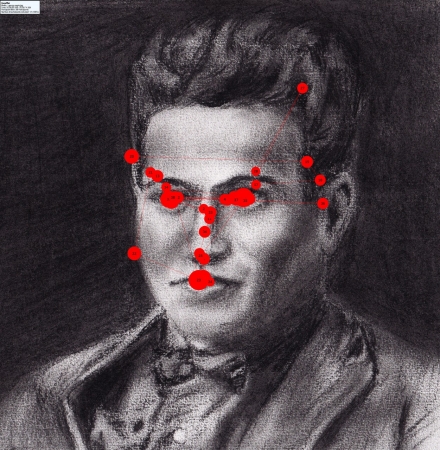Ever wondered what historians, sociologists, architects, economists, doctors and artists are looking for when they study maps or plans, graphs and tables, x-rays or works of art?
Eye tracking is a technology that can answer this question: it can record how long someone dwells on a particular detail in an image, where the eye moves from one part of the image to the other, and the sequence the viewer uses to gain information from visual data.
Dr Greg Minissale of Art History, Associate Professor Tony Lambert of Psychology, and Dr Gerald Weber and Dr Christof Lutteroth of Computer Science have been successful in their bid for a Learning Enhancement Grant for their Eye-Teaching project.
As Greg, the project leader, explains: “the new project seeks to use eye tracking technology to record the eye movements of experts in art, psychology, computer science, medicine, statistics and other disciplines.”
“These recordings can then be played back to students to teach them how to study art, maps, graphs, statistics and diagrams, guided by expert eye behaviour.”
“The beauty of the technology is that viewers intuitively follow and mimic the moving graphics of dots and lines superimposed over the visual data, and they learn by example the natural rhythms and sequences used by experts to extract information from images.”
“Students can intuitively adopt expert viewing behaviour without the need of lengthy texts or instructions.”
The Eye-Teaching team have received funding for a pilot study of three disciplines in the first year, to be rolled out to a larger number of disciplines in the second year in the form of MP4 files that can be uploaded onto Canvas for teaching enhancement and to appeal to multiple learning styles.
If you would like to participate in this project please contact Greg Minissale.








